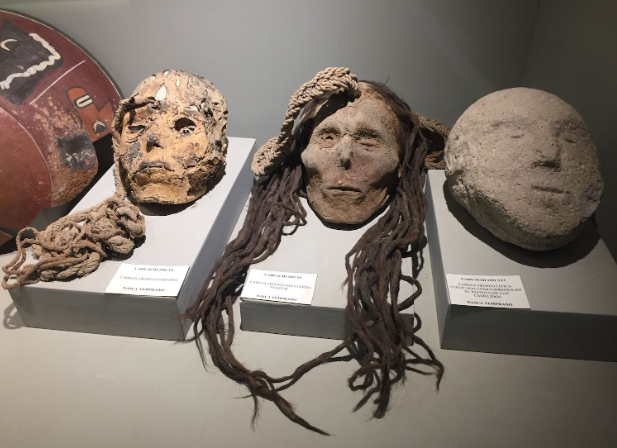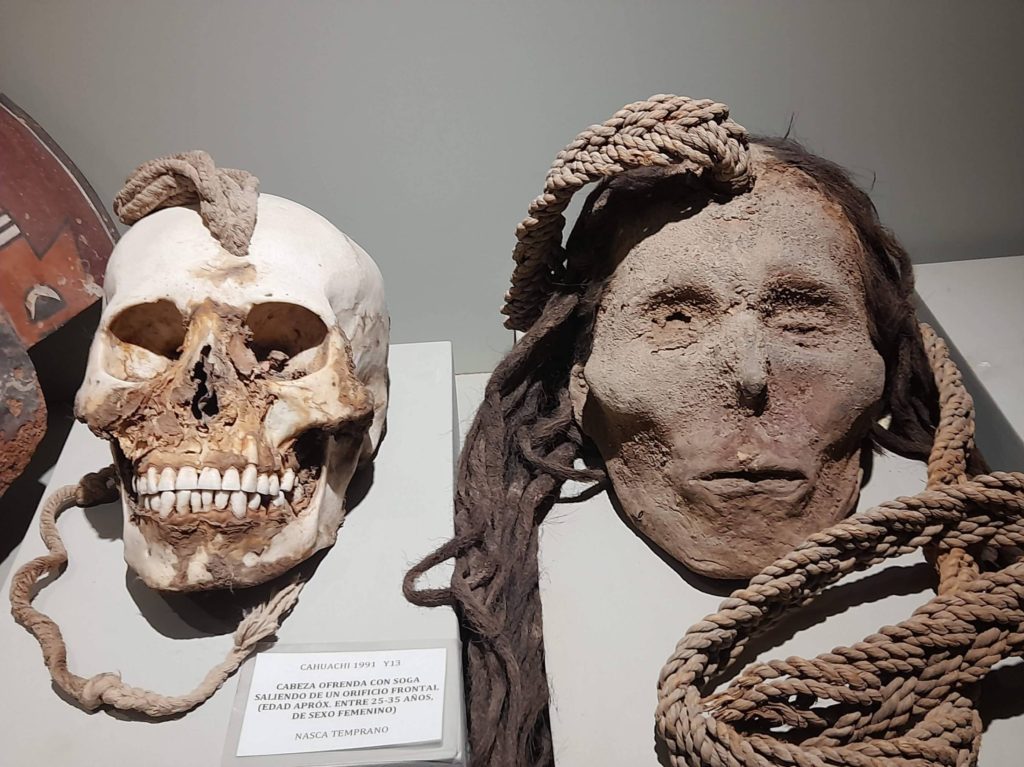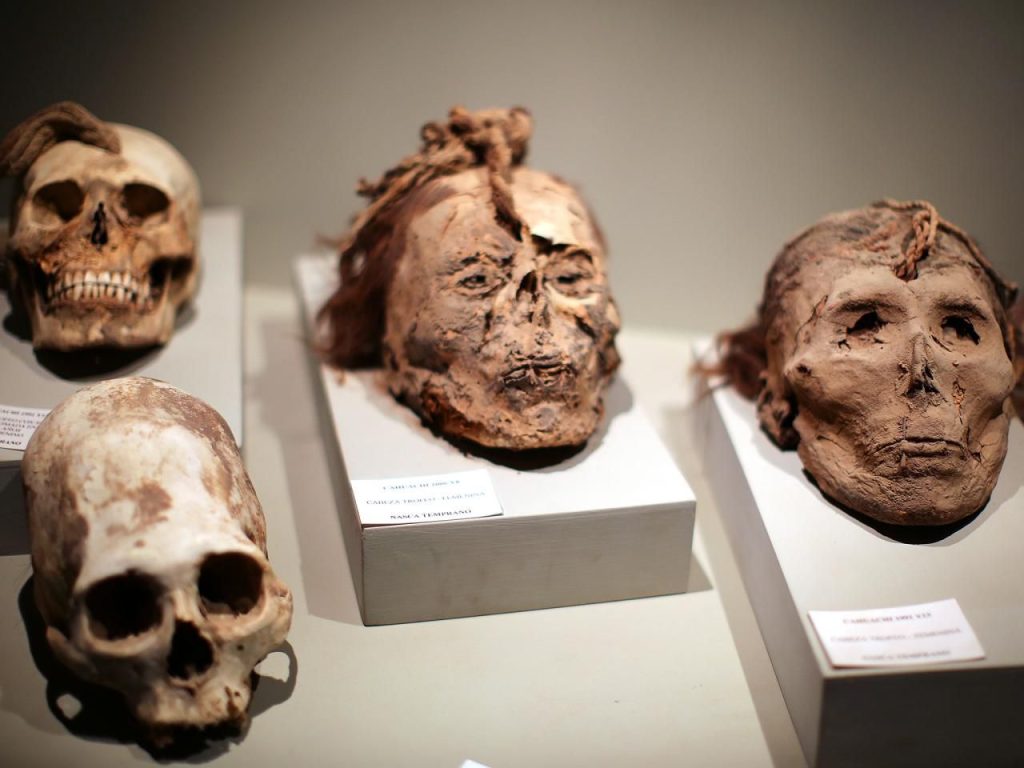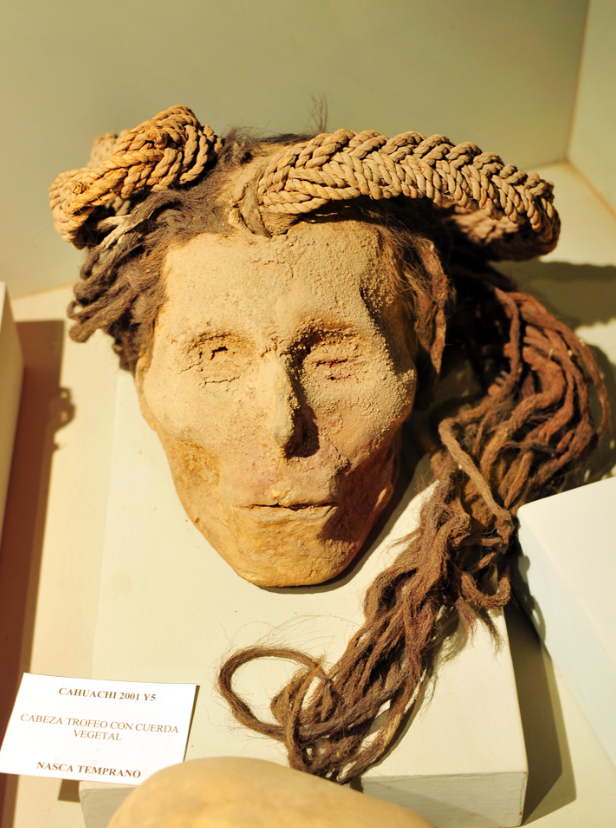
Chilling Trophies of the Nazca Culture: Skulls Bearing Forehead Holes Tied with Ropes, Hinting at a Gruesome Tradition of War Trophies.
The Nazca culture, flourishing between 100 BC and 800 AD in what is now modern-day Peru, left behind a perplexing legacy of trophy heads that has intrigued archaeologists for decades. These macabre artifacts reveal a unique and chilling aspect of their civilization’s beliefs and practices. The trophy heads, characterized by a hole in the forehead with a rope through it, are believed to have been worn as grim reminders of victorious battles. Through careful analysis and examination of these remains, researchers have uncovered the grisly process of their creation, offering insights into the rituals and customs of the Nazca people.

Creation of Trophy Heads: Studies indicate that the creation of these haunting trophy heads involved a gruesome and meticulous procedure. The heads were first severed from the body using sharp obsidian knives, and the cervical vertebrae were separated from the neck. Once the base of the skull was broken away, the soft tissues, including the tongue, muscles, and throat structures, were discarded. This step removed the brain and its supporting membranes, leaving behind an empty cavity within the skull.
The next stage involved stuffing the cavity with various materials. Researchers have found evidence of cloth and sometimes vegetable matter being used for this purpose. This process aimed to fill the void and maintain the shape of the head, possibly signifying the preservation of the individual’s identity even in death.

Purpose and Symbolism: The purpose of creating these trophy heads remains a subject of conjecture. Scholars believe that these gruesome artifacts may have served a variety of symbolic and practical functions. One prevalent theory is that the heads were worn by victorious warriors as a badge of honor and a display of their prowess in battle. This gruesome practice may have instilled fear in the enemies and asserted dominance within the community.

It is also suggested that the act of removing the head from the body and manipulating its features was an attempt to gain control over the individual’s spirit or to harness their spiritual power for the benefit of the living. Such practices likely held profound cultural significance and could have been linked to religious or shamanic beliefs.
Methods of Display: The method of displaying the trophy heads appears to have been carefully planned. The hole in the forehead, where the rope was threaded through, allowed the heads to be hung from structures such as buildings or even worn around one’s waist as a morbid adornment. The rope inside the head was secured using a wooden toggle or a large knot, ensuring that the heads remained in place.

Furthermore, the lips of the trophy heads were closed using long spines from the local huarango tree, further contributing to the eerie and unsettling appearance of these artifacts. This meticulous attention to detail indicates the significance and veneration bestowed upon these trophies within the Nazca culture.
The trophy heads of the Nazca culture stand as a testament to the complexity and enigmatic nature of ancient civilizations. The gruesome process involved in creating these artifacts reflects a world far removed from our modern sensibilities. While we may never fully comprehend the beliefs and rituals that led to the creation of these haunting objects, their discovery and analysis provide valuable insights into the religious, social, and martial aspects of the Nazca culture, further enriching our understanding of the ancient world.




